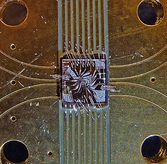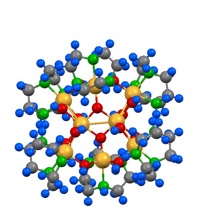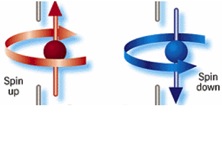They seem ubiquitous today but there was a time when hardly anyone living in Canada knew much about soybeans. There’s a good essay about soybeans and their cultivation in Canada by Erik Dorff for Statistics Canada, from Dorff’s soybean essay,
Until the mid-1970s, soybeans were restricted by climate primarily to southern Ontario. Intensive breeding programs have since opened up more widespread growing possibilities across Canada for this incredibly versatile crop: The 1.2 million hectares of soybeans reported on the Census of Agriculture in 2006 marked a near eightfold increase in area since 1976, the year the ground-breaking varieties that perform well in Canada’s shorter growing season were introduced.
Soybeans have earned their popularity, with the high-protein, high-oil beans finding use as food for human consumption, animal rations and edible oils as well as many industrial products. Moreover, soybeans, like all legumes, are able to “fix” the nitrogen the plants need from the air. This process of nitrogen fixation is a result of a symbiotic interaction between bacteria microbes that colonize the roots of the soy plant and are fed by the plant. In return, the microbes take nitrogen from the air and convert it into a form the plant can use to grow.
This means legumes require little in the way of purchased nitrogen fertilizers produced from expensive natural gas-a valuable property indeed.
Until reading Dorff’s essay, I hadn’t early soybeans had been introduced to the Canadian agricultural sector,
While soybeans arrived in Canada in the mid 1800s-with growing trials recorded in 1893 at the Ontario Agricultural College-they didn’t become a commercial oilseed crop in Canada until a crushing plant was built in southern Ontario in the 1920s, about the same time that the Department of Agriculture (now Agriculture and Agri-Food Canada) began evaluating soybean varieties suited for the region. For years, soybeans were being grown in Canada but it wasn’t until the Second World War that Statistics Canada began to collect data showing the significance of the soybean crop, with 4,400 hectares being reported in 1941. In fact, one year later the area had jumped nearly fourfold, to 17,000 hectares…
As fascinating as I find this history, this bit about soybeans and their international importance explain why research about soyboans and nanoparticles is of wide interest (from Dorff’s essay),
The soybean’s valuable characteristics have propelled it into the agricultural mix in many parts of the world. In 2004, soybeans accounted for approximately 35% of the total harvested area worldwide of annual and perennial oil crops according to the Food and Agriculture Organization of the United Nations (FAO) but only four countries accounted for nearly 90% of the production with Canada in seventh place at 1.3% (Table 2). Soymeal-the solid, high-protein material remaining after the oil has been extracted during crushing-accounts for over 60% of world vegetable and animal meal production, while soybean oil accounts for 20% of global vegetable oil production.
There’s been a recent study on the impact of nanoparticles on soybeans at the University of California at Santa Barbara (UC Santa Barbara) according to an Aug. 20, 2012 posting by Alan on the Science Business website, (h/t to Cientifica),
Researchers from University of California in Santa Barbara found manufactured nanoparticles disposed after manufacturing or customer use can end up in agricultural soil and eventually affect soybean crops. Findings of the team that includes academic, government, and corporate researchers from elsewhere in California, Texas, Iowa, New York, and Korea appear online today in the Proceedings of the National Academy of Sciences.
The research aimed to discover potential environmental implications of new industries that produce nanomaterials. Soybeans were chosen as test crops because their prominence in American agriculture — it is the second largest crop in the U.S. and the fifth largest crop worldwide — and its vulnerability to manufactured nanomaterials. The soybeans tested in this study were grown in greenhouses.
The Aug. 20, 2012 UC Santa Barbara press release has additional detail abut why the research was undertaken,
“Our society has become more environmentally aware in the last few decades, and that results in our government and scientists asking questions about the safety of new types of chemical ingredients,” said senior author Patricia Holden, a professor with the Bren School [UC Santa Barbara’s Bren School of Environmental Science & Management]. “That’s reflected by this type of research.”
Soybean was chosen for the study due to its importance as a food crop –– it is the fifth largest crop in global agricultural production and second in the U.S. –– and because it is vulnerable to MNMs [manufactured nanomaterials]. The findings showed that crop yield and quality are affected by the addition of MNMs to the soil.
The scientists studied the effects of two common nanoparticles, zinc oxide and cerium oxide, on soybeans grown in soil in greenhouses. Zinc oxide is used in cosmetics, lotions, and sunscreens. Cerium oxide is used as an ingredient in catalytic converters to minimize carbon monoxide production, and in fuel to increase fuel combustion. Cerium can enter soil through the atmosphere when fuel additives are released with diesel fuel combustion.
The zinc oxide nanoparticles may dissolve, or they may remain as a particle, or re-form as a particle, as they are processed through wastewater treatment. At the final stage of wastewater treatment there is a solid material, called biosolids, which is applied to soils in many parts of the U.S. This solid material fertilizes the soil, returning nitrogen and phosphorus that are captured during wastewater treatment. This is also a point at which zinc oxide and cerium oxide can enter the soil.
The scientists noted that the EPA requires pretreatment programs to limit direct industrial metal discharge into publicly owned wastewater treatment plants. However, the research team conveyed that “MNMs –– while measurable in the wastewater treatment plant systems –– are neither monitored nor regulated, have a high affinity for activated sludge bacteria, and thus concentrate in biosolids.”
The authors pointed out that soybean crops are farmed with equipment powered by fossil fuels, and thus MNMs can also be deposited into the soil through exhaust.
The study showed that soybean plants grown in soil that contained zinc oxide bioaccumulated zinc; they absorbed it into the stems, leaves, and beans. Food quality was affected, although it may not be harmful to humans to eat the soybeans if the zinc is in the form of ions or salts, in the plants, according to Holden.
In the case of cerium oxide, the nanoparticles did not bioaccumulate, but plant growth was stunted. Changes occurred in the root nodules, where symbiotic bacteria normally accumulate and convert atmospheric nitrogen into ammonium, which fertilizes the plant. The changes in the root nodules indicate that greater use of synthetic fertilizers might be necessary with the buildup of MNMs in the soil.
At this point, the researchers don’t know how zinc oxide nanoparticles and cerium oxide nanoparticles currently used in consumer products and elsewhere are likely to affect agricultural lands. The only certainty is that these nanoparticles are used in consumer goods and, according to Holden, they are entering agricultural soil.
The citation for the article,
Soybean susceptibility to manufactured nanomaterials with evidence for food quality and soil fertility interruption by John H. Priester, Yuan Ge, Randall E. Mielke, Allison M. Horst Shelly Cole Moritz, Katherine Espinosa, Jeff Gelb, Sharon L. Walker, Roger M. Nisbet, Youn-Joo An, Joshua P. Schimel, Reid G. Palmer, Jose A. Hernandez-Viezcas, Lijuan Zhao, Jorge L. Gardea-Torresdey, Patricia A. Holden. Published online [Proceedings of the National Academy of Sciences {PNAS}] before print August 20, 2012, doi: 10.1073/pnas.1205431109
The article is open access and available here.


